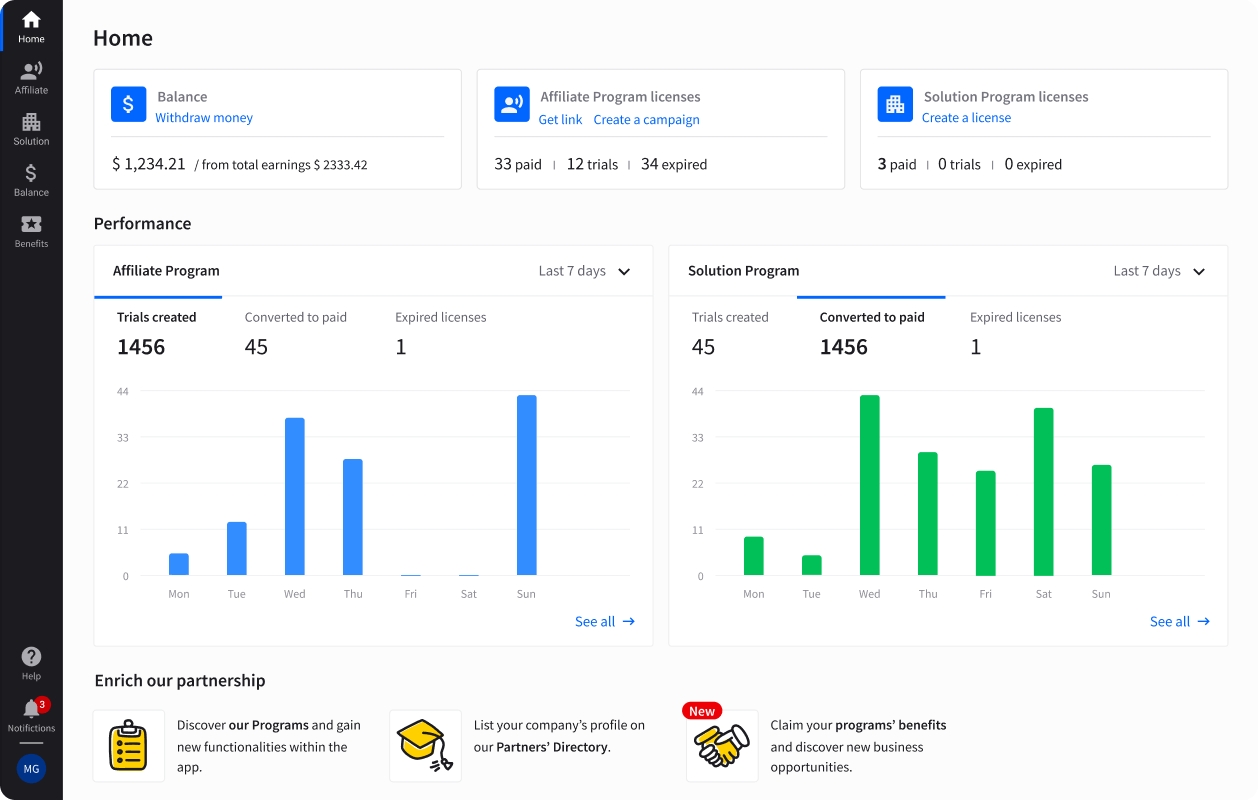Showing top 0 results 0 results found
Showing top 0 results 0 results found

As humans, we don't always make decisions based on the logical side of our brain. It's not unheard of for people to make snap decisions using their emotions or their intuition.
This is where using psychology principles in email marketing can come in handy. When your inbox is full of options, you'll filter what seems interesting, using emotional triggers. Understanding the behavioral cues that trigger a specific behavior that leads to customer engagement is paramount in email marketing - and marketing in general.
A business needs marketing psychology for several reasons, both when it comes to email marketing and its marketing efforts in general:
- Marketing psychology will help you figure out what works for your prospects.
- Through marketing psychology, you can create better buyer personas that will resonate with your audience.
- You can figure out various specifics, from the best time to send an email to the marketing metrics you need to track for specific campaigns.
- You can create a message that will answer the most pressing question your audience has to pose: "Why you and not a competitor?"
The above points are the basics that can bring a robust conversion rate, as they all help create a message - and, by extension, a brand tone and a brand image - that will resonate with the audience and solve the "problems" associated with your product or service.
The techniques
Some techniques are standard and some not so much, but there are seven foolproof ways to create an email marketing campaign that will keep your contact list engaged. Here are the elements you'll need to keep a high open and Click-Through rate (CTR), along with an involved and always enticed audience:
- Social proof
- Price comparison
- Color psychology
- Exclusivity
- Many small "yes-es"
- Reciprocity
- FOMO and scarcity
Let's see what each of these methods has to offer your email marketing campaigns and how you can use them properly.
1. Social proof
Social proof is one of the best-known tactics when it comes to marketing psychology. One could even argue that Instagram growth or social media growth, in general, is a product of the power of social proof. And they'd probably be correct.
Social proof is deeply rooted in human psychology and was initially created for humans to be able to moderate their behavior in a way that would allow societies to form. This archetypal element of this marketing psychology hack is what makes it so powerful.
To put it simply, through social proof, consumers can look at one person's clothes, behavior, anything and think: "Hey, I want that, too!"
Social proof in marketing can be as simple as a stamp of approval from a trusted company or as complicated as a testimonial video in your email marketing newsletter.
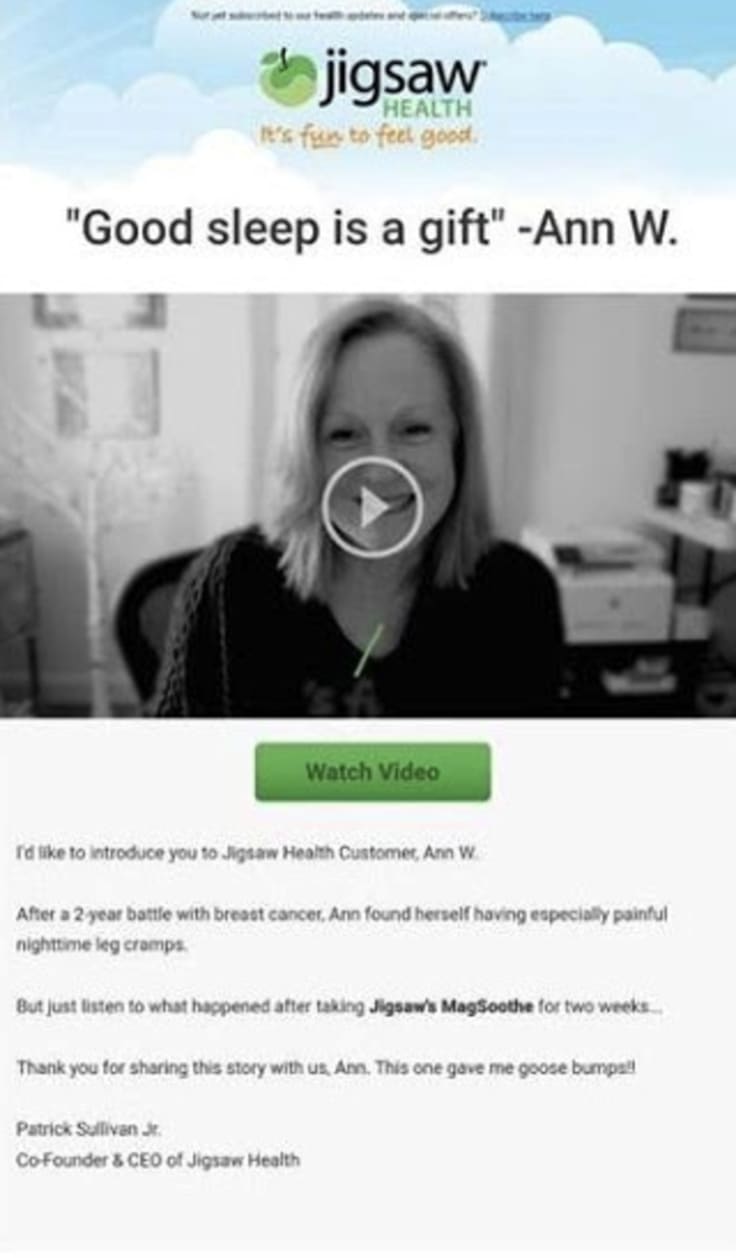
As you can see, a message like the one above can impact a consumer's thought process and, in the end, their decision. After all, according to HubSpot, "88% of consumers trust user reviews as much as personal recommendations".
So, create an email that will display some type of social proof, be it a testimonial - video or not -, a social media share button, a video that will lead to a high-converting landing page, anything that will show your audience that your existing customers are happy and thriving while using your product.
And last but not least, don't be afraid to use User-Generated Content (UGC) as a testimonial. UGC is an affordable and surefire way to utilize social proof and engage your prospects.
2. Price comparison
Price comparison (or anchoring) is a pretty complex concept that most people - and marketers - don't really understand. However, it's a fantastic psychology hack, provided it's used correctly.
The idea stems from the fact that pricing is an artificial concept, and people have a limited or flawed perception of how prices are formed. For example, we know the house's estimated cost, and we can understand that various components form its price.
But do we know this because this is the norm, or is it objectively true?
The answer is no, it's not objectively true, but as humans, we've been trained to find cues that will point us in the right direction, both when it comes to the price itself and when it comes to us navigating the sales process as a whole.
Price comparison is a fairly complex but handy psychology hack. In your email marketing, you'll find that it's pretty useful when you've got an offer going on.
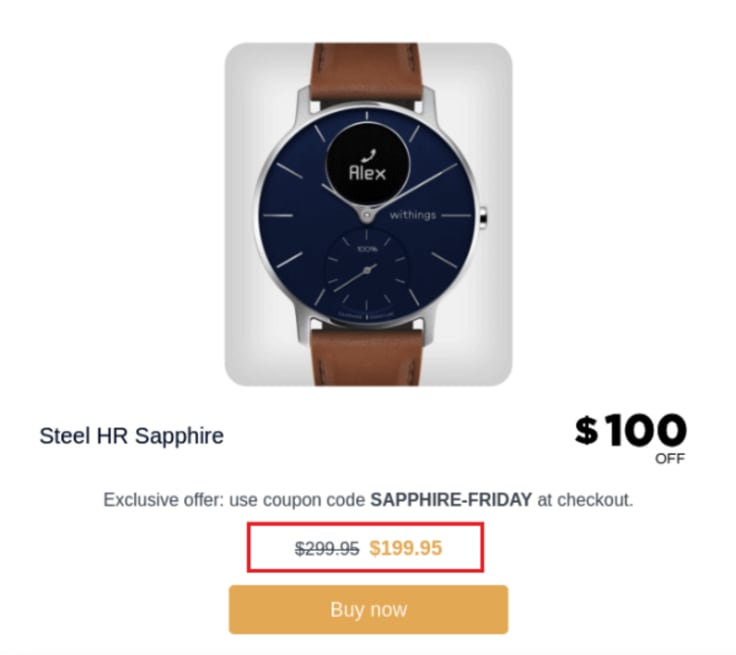
There are two ways you can use price comparison to your advantage:
- An email with an offer that will display the "old price" and then the "new price".
- An email newsletter, where you can save the best - aka the item you actually want to sell - for last. Make sure to display the more expensive items first.
Both methods aim to show the item you want to sell in a more "expensive" light by surrounding it with more expensive items from your catalog or showcasing its original price. This psychology hack will trick the recipients into thinking that the product is more costly than it really is.
3. Color psychology
Color psychology is also one of the oldest tricks out there:
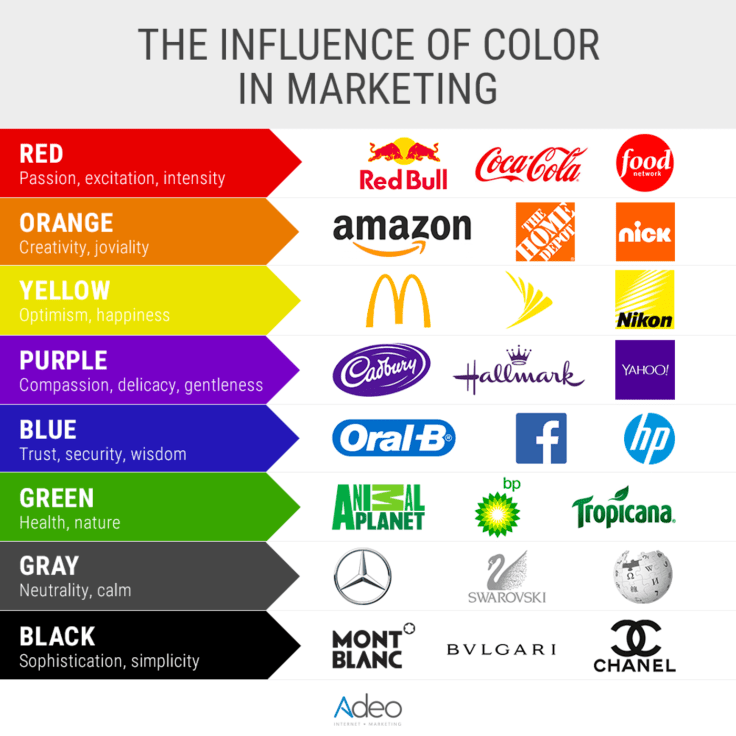
When talking about color psychology, we're talking about more than the standard color scheme that prospects associate with your brand. We're talking about the colors that help your brand visually communicate with the prospects and elicit an emotional response.
Your email marketing campaign's color scheme and the templates you're going to use can make or break your email marketing campaign, as specific colors have associations with certain feelings.
Colors also have specific associations with age, gender, speed, price, etc. For example:
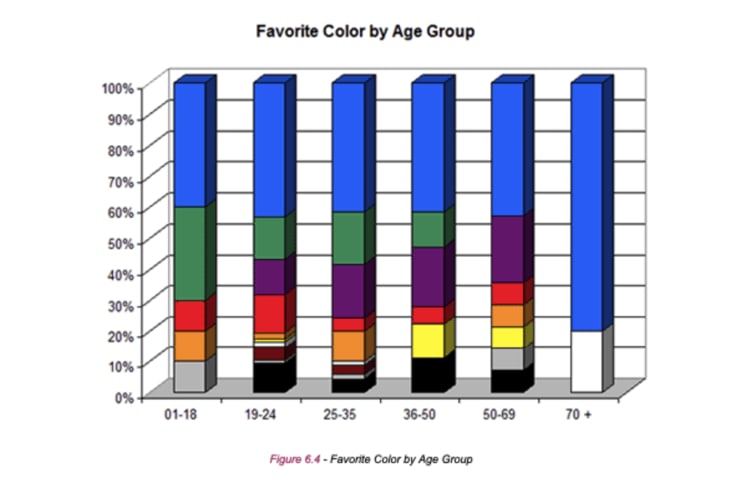
Never use red if you want to talk about a discount or a way to earn more cash. It's associated with urgency or danger. On that note, never use blue when it comes to offers. The color of intelligence, safety, and calm won't work well with a "50% OFF" headline.
Use bold colors that will complement the rest of your email on CTAs, and try not to stray off your brand's original color scheme.
Of course, the above is just a general rule of the thumb. In all fairness, color psychology is one of the most complex email marketing psychology hacks - and one of the most complex marketing hacks in general.
To be able to understand what works for your audience fully, you will need to test and create customer segments. Gather data, monitor their responses, take inclusivity into account and see what works for your brand specifically.
4. Exclusivity
For this one, I have a personal experience to share: When I worked as a sales representative, one of the most impressive things was how quick people were to reconsider when they felt that the offer they'd stumbled upon was an "exclusive members' offer".
Evidently, people love scarcity; they love to have something labeled "exclusive" or "limited edition". This is deeply rooted in the collective subconscious; much like social proof, exclusive products dictate what one needs to have to become the "leader of the tribe".
As a marketing hack, you need to craft an email marketing campaign that will show the limited number of a product, an experience, or an offer. Ensure that your content calendar can boost this idea of exclusivity with cryptic posts on social media and even a countdown timer.
This will help engagement and conversion rates. Remember, the more exclusive the product, the better, especially if you decide to create an "exclusive, members' only club" with unique benefits.
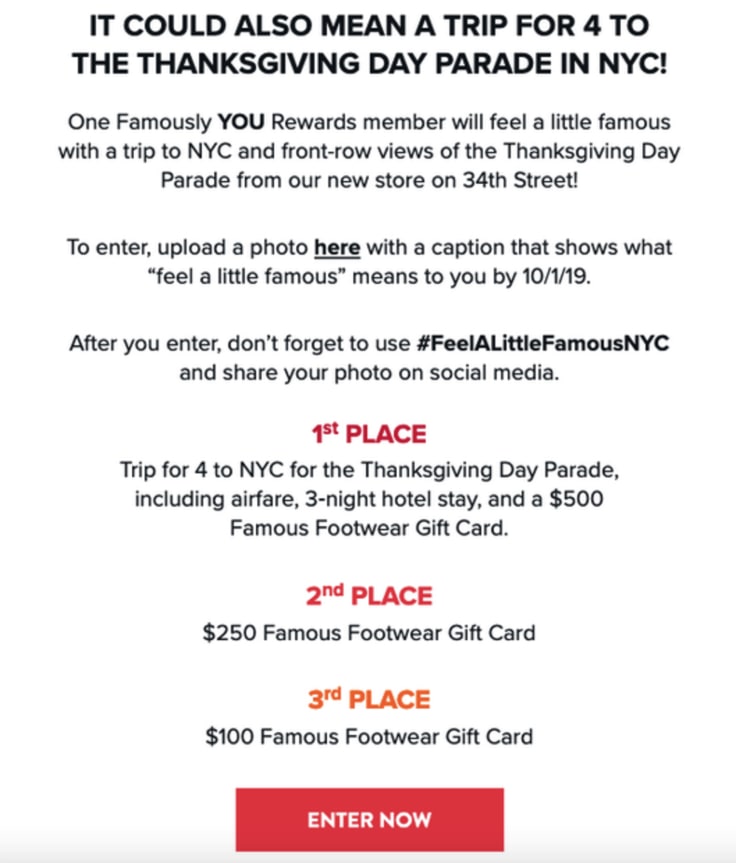
Notice the email's subject line. It's straight, to the point, and uses the trigger words "reward", "member", and "exclusive" to let recipients know that rewards program members win a once-in-a-lifetime experience: A trip to NYC for the famous Thanksgiving Day Parade.
5. Many small "yes-es"
Also known as the "foot-in-the-door" technique, scoring many small "yes" before the big one is nothing new. In fact, it's almost as old as sales themselves.
Getting people to agree with you on a more extensive request's smaller components is like creating a step-by-step tutorial. The only difference is that you're asking them whether they find the parts interesting.
The first "yes" you need here would be to get users to subscribe to your list. The second "yes" could be whether they'd want to visit a landing page or watch a video for a promo code.
Start small and work your way up towards a persuasive email copy as your main goal.
Persuasive language, after all, is what will make your audience say yes to what you have to offer, and it's what engages customers and moves prospects gently down the funnel.
6. Reciprocity
In other words, "Wash your back, so you wash mine", giving some to get some back is one of the oldest tricks in the book. In email marketing, this psychology hack is based on the idea that your email will have some value that prospects will obtain by purchasing your product or service.
But how will you show mutual benefit without even knowing your prospects first?
Use a lead magnet:
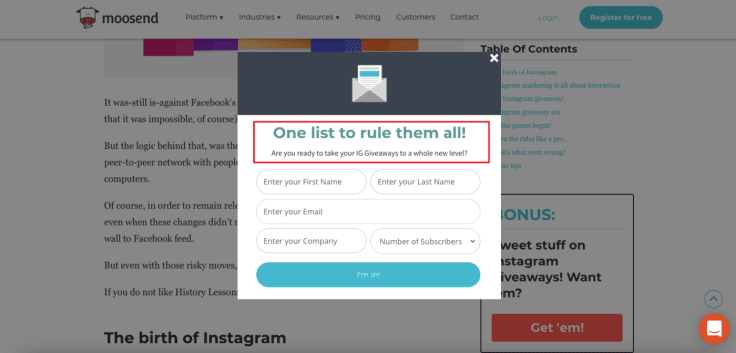
Lead magnets will benefit your prospects, whereas their email address and participation in your list will benefit you. After all, wanting a prospect's email address to add to your list is kind of like a business proposal: They'll wonder what's in it for them.
Include something of value, but not of such value that you'll attract the wrong crowd or waste time and resources. An ebook, a checklist, or an exclusive video tutorial will help more than you'd think.
Reciprocity goes a long way, and it's not just a hook that will help you grow your email list. Much like persuasive language and many small "Yes" s, it can help your prospects move further down the sales funnel and take the action you desire. You offered them value; now they're willing to act as ambassadors and offer you some as well.
7. FOMO and scarcity
I saved the best for last. Fear of Missing Out and scarcity are, perhaps, the most effective tactics, and they work beautifully together.
I can prove that by calculating the cost of concert tickets I've purchased through the years, thinking that they'll be gone within a day of the pre-sale.
FOMO is one of the most effective psychological hacks, seeing as nobody ever wanted to miss out on something that could be the answer to their problem. In contrast, the principle of scarcity dictates precisely that: the prospect can miss out on the product. The two complement each other.
You can instill FOMO in your prospects' hearts using countdown timers on your email marketing campaigns or landing pages, sending follow-up emails - as part of your outreach strategy - that will let your prospects know that the product, service, experience - anything you're offering - is going-going-gone; even your social media campaigns can create that feeling.
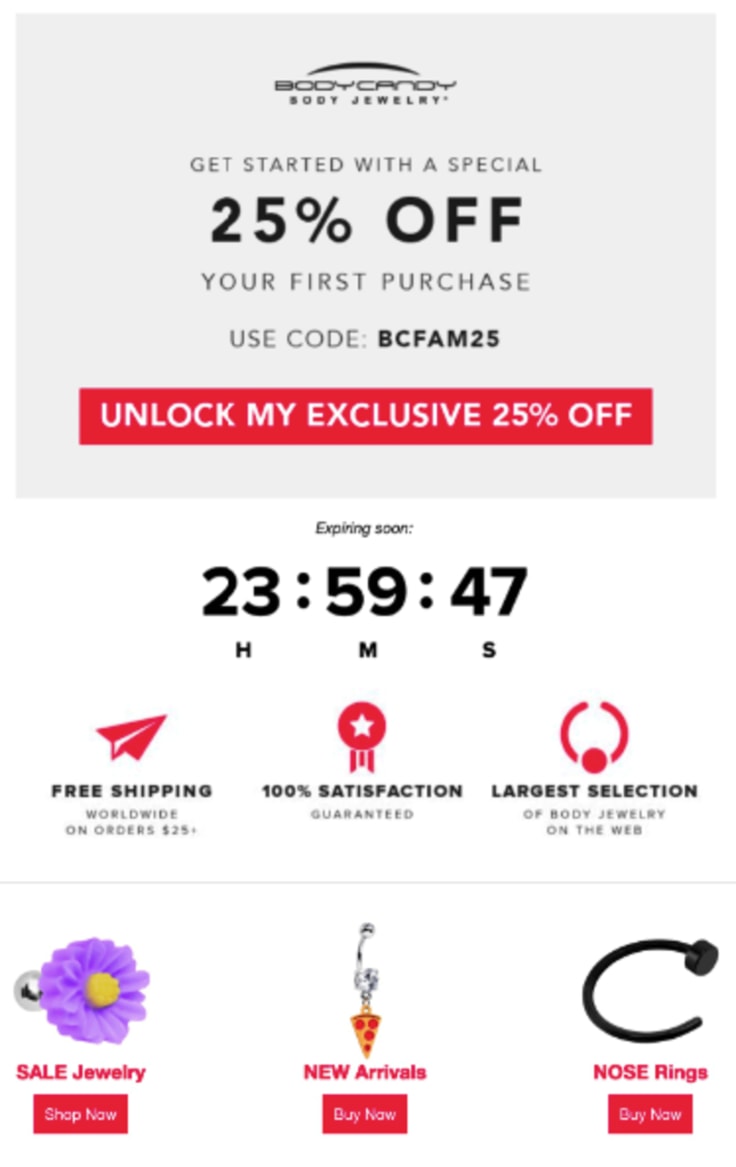
See the example above? This is what you need to do. Create an email that will show a popular product and how it can be sold out in the blink of an eye.
After all, nobody wants to miss out on all the fun, nobody wants to purchase a non-useful product, and nobody wants to make their lives harder.
By incorporating FOMO, you trigger these thoughts, and, in the end, you will get the users to feel like not buying is the equivalent of leaving money on the table.
Use the right psychological hacks
As mentioned above, none of these psychological hacks to email marketing stand a chance without the right content and copy.
After segmenting your campaigns and studying your prospects' behavioral triggers carefully, you'll need to craft content that will resonate with them and will feel tailor-made. Use actionable language and clear instructions, words that elicit a positive response but with a casual feeling.
Evidently, when a brand uses the right content - i.e., the one their prospects are most likely interested in - it’ll be able to increase the time spent on site, the number of people returning to the website and, of course, conversion.
After all, marketing psychology is all about finding the right emotion that will give prospects a little push in the right direction and make great use of consumers' irrational nature.



